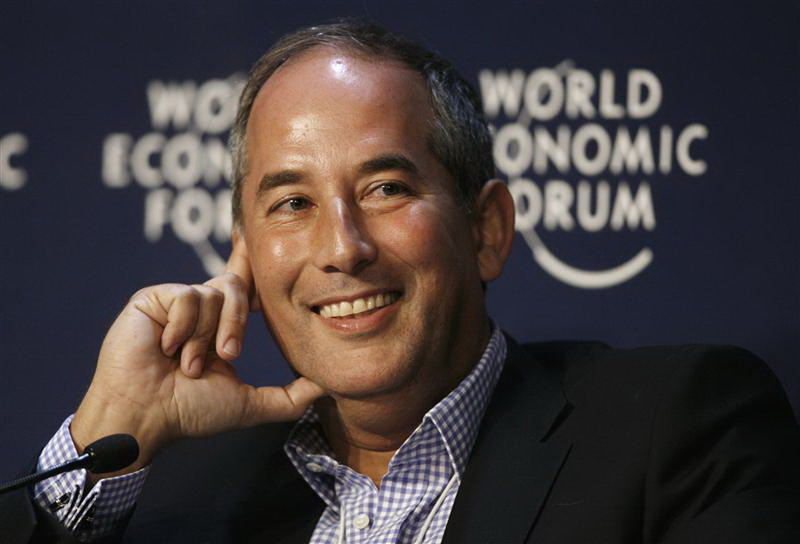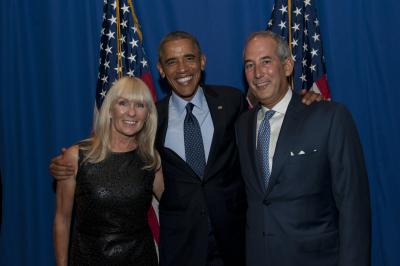Running Thomson Reuters provides me a ringside seat on the global economy. A huge proportion of the world’s trading in stocks bonds foreign currencies and other instruments pass through our systems every day. In addition our 2600 journalists provide not only a running account of market movements but also provide the context and analysis behind these developments.
In this blog however I provide my personal perspective. I cannot wholly separate from the person at work and my day job certainly provides a special vantage point but I do not here speak for the company. In addition given the commitment of Thomson Reuters to preserving the independence freedom from bias and impartiality required by the Reuters Trust Principles I avoid political opinions – although I have strong ones personally.
So I think we came very close to the abyss last week. The Sunday night bankruptcy of Lehman Brothers was destined to get the week off to a bad start despite the timely acquisition of Merrill Lynch by Bank of America. The mid-week bailout of AIG avoided another specific set of problems but by Thursday the money markets had totally locked up certain money funds had breached the near sacred $1.00 per share threshold and even well-run investment banks found they could no longer finance their trading operations despite not holding the toxic exposures that brought down Lehman AIG and others.
What was needed was a systemic solution – a solution that was audacious enough and comprehensive enough and yes expensive enough to permit the very interwoven global financial system to begin rebuilding its broken and frayed strands. Although the final shape of the federal bailout plan is still being developed as I write it looks like the penny has dropped in Washington and we have moved away from bank-by-bank band–aids to a comprehensive response. Judging by the stock markets’ reaction on Thursday and Friday there is growing confidence that the crisis phase of the Great Repricing may be receding. I label the period commencing with the failure of the Bear Stearns funds in Summer 2007 and probably extending for at least another 12 months from today as the "Great Repricing" because we are witnessing an unprecedented repricing of risk and a deleveraging of most portfolios
One of the attractions of writing history rather than blogging is that you can generally wait to see what happens before writing. That is always the safer choice and usually yields the best analysis but in these posts I take up the challenge of writing instant history. So here goes. I think was came close to the edge last week; I think the proposed federal bailout fund is a sensible policy response to an unprecedented set of risks; I think it will work; and I think we will all be paying the price for years to come.
While I am focused on historians they often observe that great empires (think Roman or British) ultimately fail not as a result of a decisive military loss but because their powerful economies eventually become over-extended. If this is true the US economy will need to be re-invented to avoid a similar fate for the last super-power. I hope our next President is up to the task.






Though I appreciate your audacious predictions it would be interesting to hear the reasons for backing the Paulson’s plan which appears to be forcing the US taxpayers to buy assets at a premium to market prices to bail out financial institutions. Zingales (U of Chicago GSB) makes a quite reasonable suggestion in is paper ‘Why Paulson is Wrong’ that the US government should instead mandate restructuring (a debt-for-equity swap for example) which though heavy-handed leaves the taxpayers out of the solution. The implications of keeping financial institution profits private but socializing their losses are far too serious to be waved away with panicked legislation. http://faculty.chicagogsb.edu/luigi.zingales/Why_Paulson_is_wrong.pdf
Hi Tom I totally agree with you on the need to reinvent the US economy. I noticed the inefficiency at work – post offices hospitals banks just to give a few examples
Dear Tom I would love to know your view on these (and probably rank them in order of being the worst culprit in the genesis of this mess) a. Too-low-for-too-long interest rates. Actor: Alan Greenspan b. Sleeping on watch as publicly traded banks built up ginormous leverages. Actor: Chris Cox of the SEC c. Utter dereliction of duty by the Credit Rating Agencies in correctly assessing risk of the CDO/CDS/MBS instruments. Actors: Moody’s S&P Fitch (some of these are competitors to Thomson Reuters’ business so I will understand should you want to refrain from commenting) d. The toxic derivatives being OTC rather than Exchange Traded. Actors: Capital Market policy makers Sincerely
If you
Tom I agree with your view we need a systemic solution to solve this problem. Root cause of problem today and indeed with great superpowers in history before their demise has been the lack of an ethical value system. Paulson Plan does not address the root cause. If anything it is a band-aid and will build the platform for an even greater economic catastrophe to befall us a decade or two from now. You would recall Michael Milken and high yield junk bond crisis of 80s. We have had Michael Milkens and junk bonds through history. Slapping a band-aid got rid of him but morphed into an even greater problem we now witness of CDOs et al. Key to exit negative feedback loop of current problem is to develop an ethical value system framework that business globally – large medium and small – can subscribe to. Boards CEOs and executives from Fortune 1000 and SMEs and Government leaders from economies large and small need to collaborate define and develop this fast. Leaders like us should take the initiative to make this happen so our children’s generation would not suffer cycles of boom and bust as we and our forefathers have. Best Sanjay Sanjay Viswanathan e: sanjay_viswanathan@yahoo.com m: +44 7879 880 281